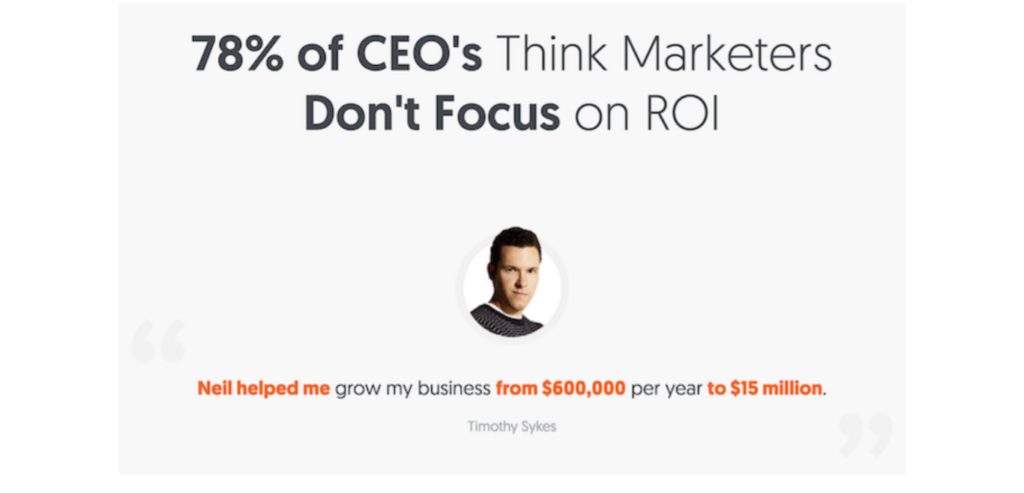
Case studies…You see companies using them frequently, but do they really work?
We weren’t sure, so we decided to test them on NeilPatel.com as a case study.
The goal was simple: generate more leads.
The results were a bit unexpected. We didn’t necessarily generate many more leads, but we were able to grow sales by 185%.
Before we get into that, let’s review what we learned about case studies. Sadly, most companies don’t know how to leverage them, which renders them ineffective correctly.
Here’s how we optimized case studies for lead generation:
The optimal case study
For the purposes of this post, let’s use a breakdown of Timothy Sykes’s testimonial on increasing his profits by $1.2 million a year and growing his traffic by 26%.
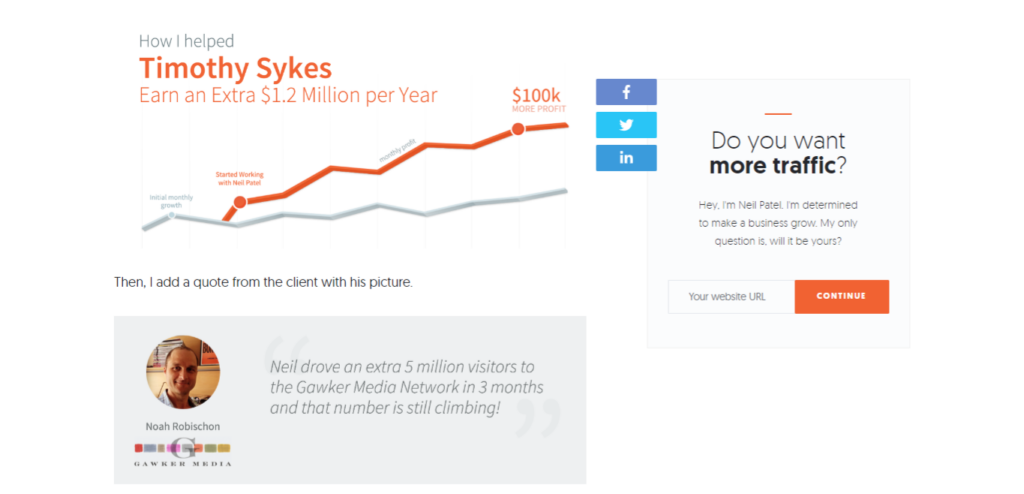
As you can see from the screenshot above, the case study is long. The page keeps scrolling, and it almost feels like a never-ending case study.
You probably won’t believe it, but that is the short one. It currently sits at 615 words, while the old one sits at 2,286 words.
The only difference was we went into more depth on the tactics used to increase Tim’s traffic.
Because many people publish fake case studies, we assumed that going into detail and being more thorough would increase conversions. We were wrong. Google Analytics data shows people don’t fully read the full case study.
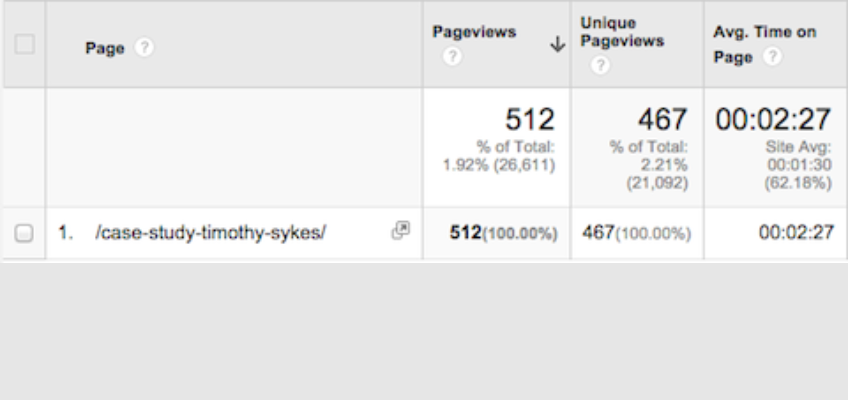
Average time: two minutes and 27 seconds. That’s how much time people spent reading the 2,286-word-long case study. When we reduced the word count to 615 words, people spent two minutes and 18 seconds reading it.
In addition to that, shortening the page increased the number of leads we generated by 39%. That’s not a bad lift for just deleting words.
Although that lift sounds great, the number of leads generated by the case study page was so insignificant compared to the minimalistic home page that we decided to keep testing.
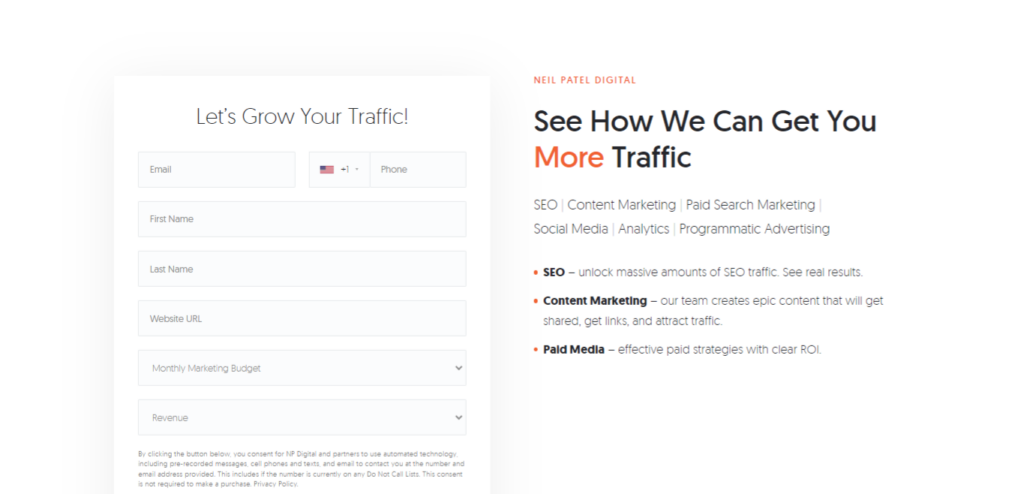
The homepage converts so well because it tells website owners the number of errors they have on their sites, and then it takes them to a lead generation page…assuming they have enough errors.
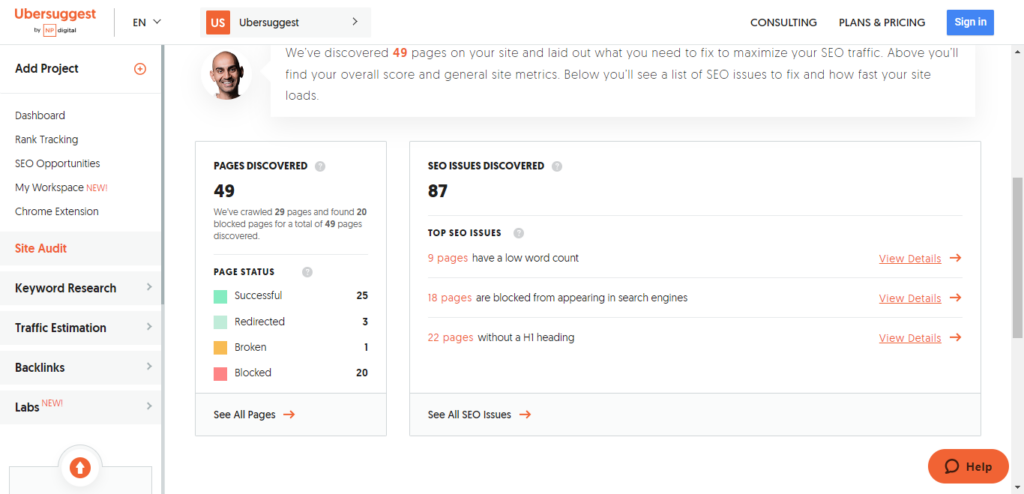
The case study page can’t be this simple due to the fact that it is supposed to be a “case study.”
We tested everything, including showcasing the problem and results at the top, which didn’t increase conversions.
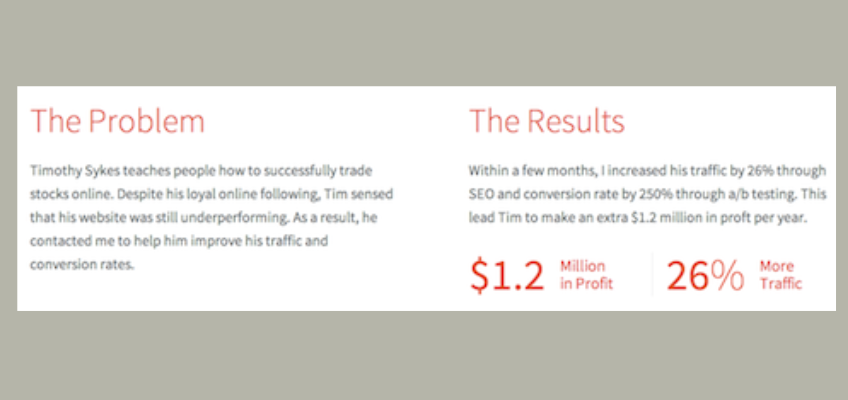
We also tested putting testimonials within the case study to validate our statements, which only helped boost leads by 11%.

We added a lead generation form at the bottom, which only increased leads by 8%, but the data wasn’t statistically significant. There’s now a book-a-call button for lead generation onboarding.
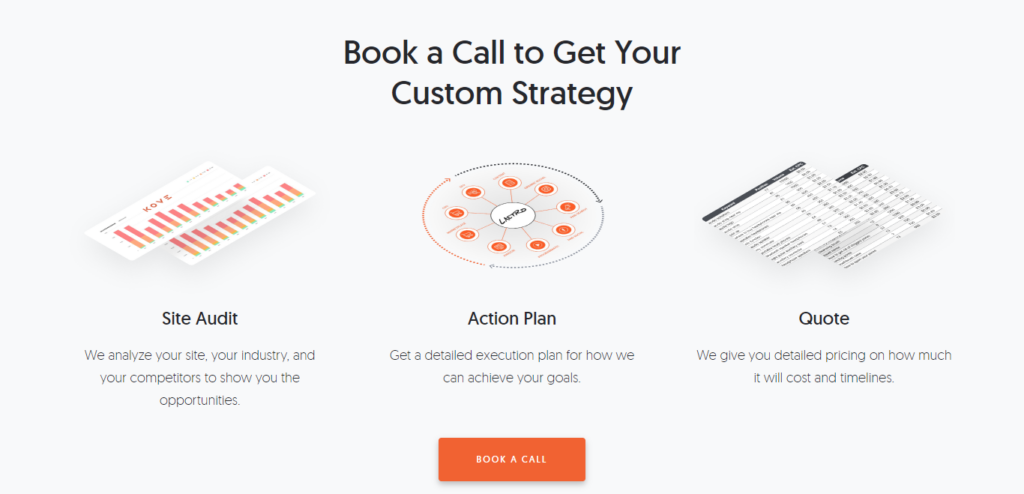
We tested an exit popup, which – funnily enough – increased leads by 64%. However, the lead quality was so low that we removed it.
The CTA button helped increase sign-ups by 49% and generated decent leads.
Although we could generate more leads with these conversion optimization techniques, the result wasn’t great. The homepage, which generates more traffic and the highest number of leads, has a conversion rate that is 843% higher than the case study page. Plus, the leads tend to be 188% more qualified than those generated through case studies.
Through this testing, we learned that case studies could help you generate leads, but they aren’t as effective as simple landing pages, like the one on the NeilPatel site.
But that doesn’t mean you shouldn’t use them. We were able to grow revenue by 185%.
Case studies can grow your revenue
Although case studies may not generate the highest number of leads, through A/B testing, we found that integrating them within your sales and marketing process can drastically increase your closing ratio. Read our how-to guide on A/B testing.
For example, we stole this concept from Single Grain: they email you case studies after you have a call with them.
Neil,
Great chatting with you briefly. I wanted to send you some additional information on us so you can gain more context on what we can do. For an overview on us, please feel free to download this.I’ve attached some PDFs for SEO, Facebook and YouTube advertising. We also do content strategy/content marketing as well so I wanted to show you some examples:
You can find some examples of our infographic work here:
https://blog.kissmetrics.com/infographics/
https://blog.hostgator.com/2013/05/02/a-day-in-the-life-of-the-internet/As for our blog posts, you can find some examples below:
https://chargeback.com/blog/17-ways-to-make-more-sales/
https://chargeback.com/blog/top-10-ways-to-cut-down-business-costs/
https://wheniwork.com/7-warning-signs-that-your-employees-are-about-to-quit/For next steps, we’d like to evaluate your business more and get on a scoping call to discuss what we have in mind + pricing. If the scoping call goes well, we can put together a proposal.
For the scoping call:
- It would help if you provided us with your AdWords Customer ID (if applicable)
- Facebook ads access to conversion@singlegrain.com
- Google Analytics access to analytics@singlegrain.com
- We’re happy to sign an NDA if need be.
Are you up for a scoping call? If so, we’ll coordinate and set something up.
You want to attach a few case studies to that email – something Single Grain also does. We found that by sending emails similar to the one above after calls and including case studies, we were able to increase our closing ratio by 70%.
In addition to that, we started including case studies within our proposal. We decided to run a simple test, including them at the end of the proposal after the signature page.
Why?
We found from using Bidsketch that people were passing around our proposal as we could see the number of times it was viewed and from what IP. The issue was that we were only talking to one person, so if the decision-makers weren’t on the phone, they wouldn’t hear why they should work with us.
By including case studies at the end, we found that it helped build more trust with the decision-maker, which caused a 115% increase in sign-ups.
Conclusion
You can test using case studies to see if you can increase the number of leads you collect. It will likely help, but it won’t be as effective as using simple landing pages to generate leads.
We know what you’re thinking: case studies will bring in more qualified leads, but that’s not always true. NeilPatel’s simple homepage, which doesn’t have much text, brings in higher-quality leads.
This doesn’t mean you shouldn’t use case studies. Instead, you need to mix them within your sales process, like in the examples above, as that will help you generate more sales.
